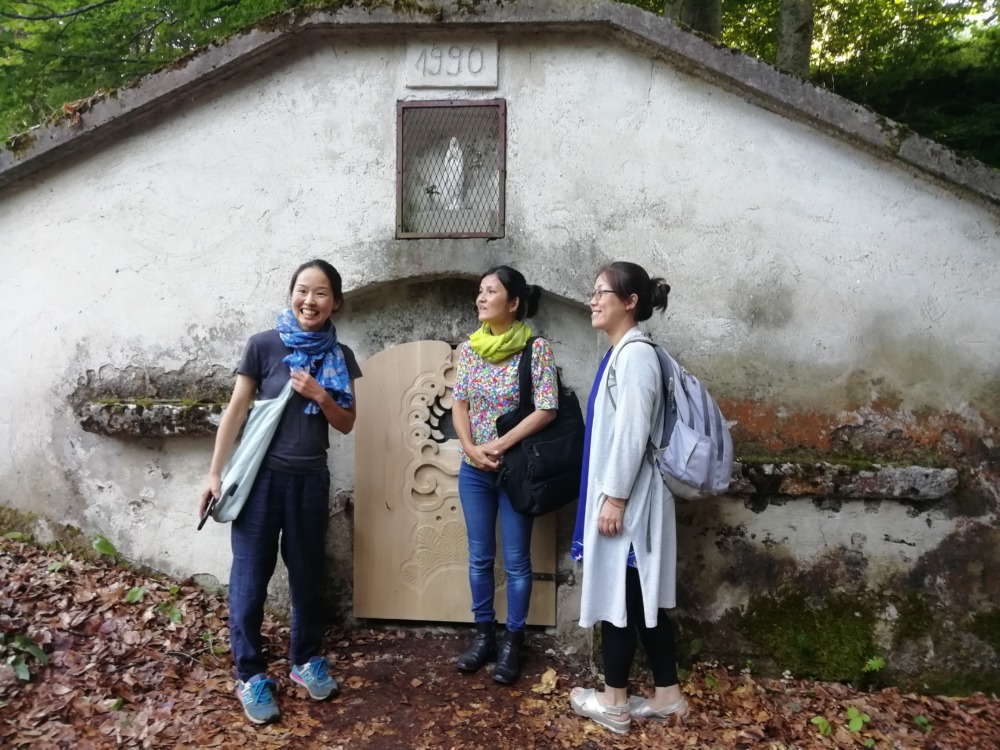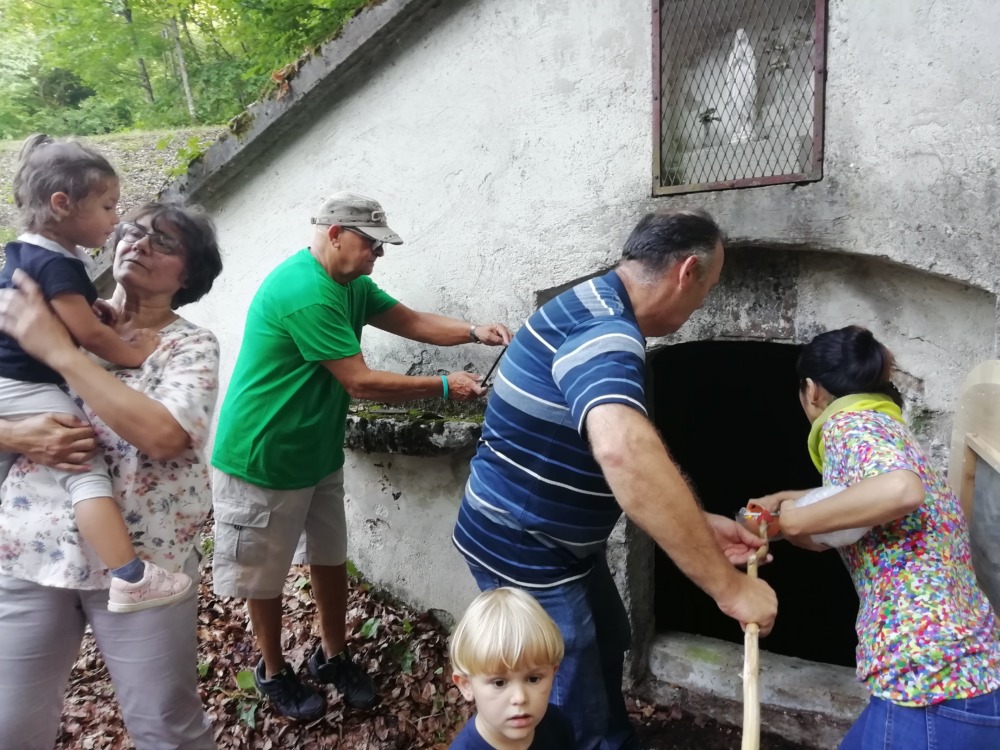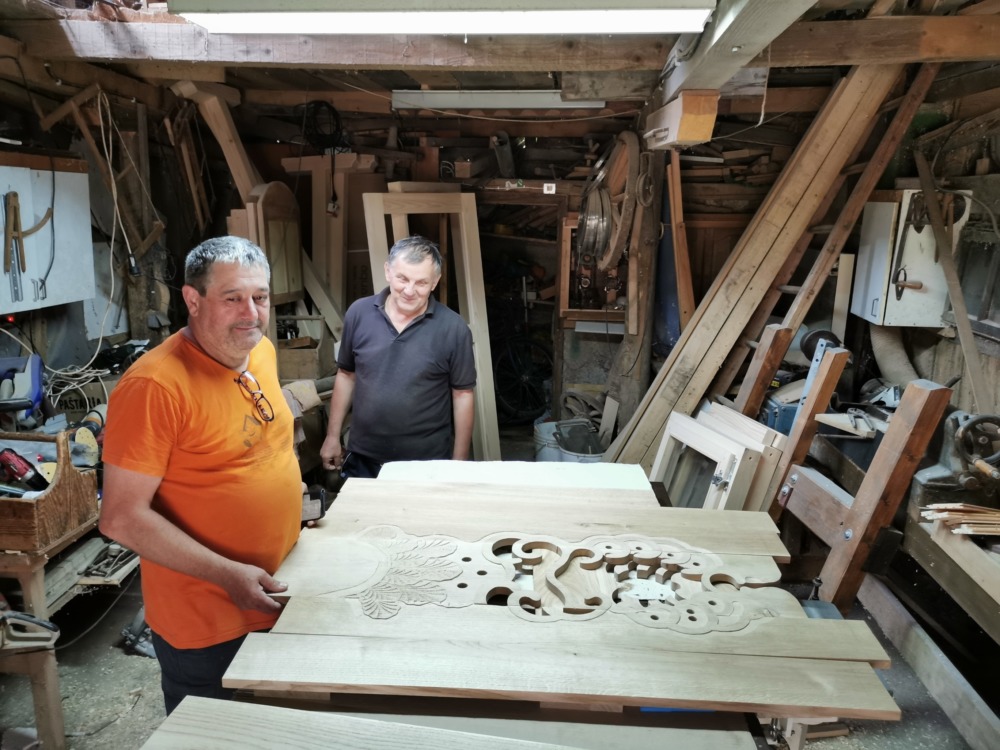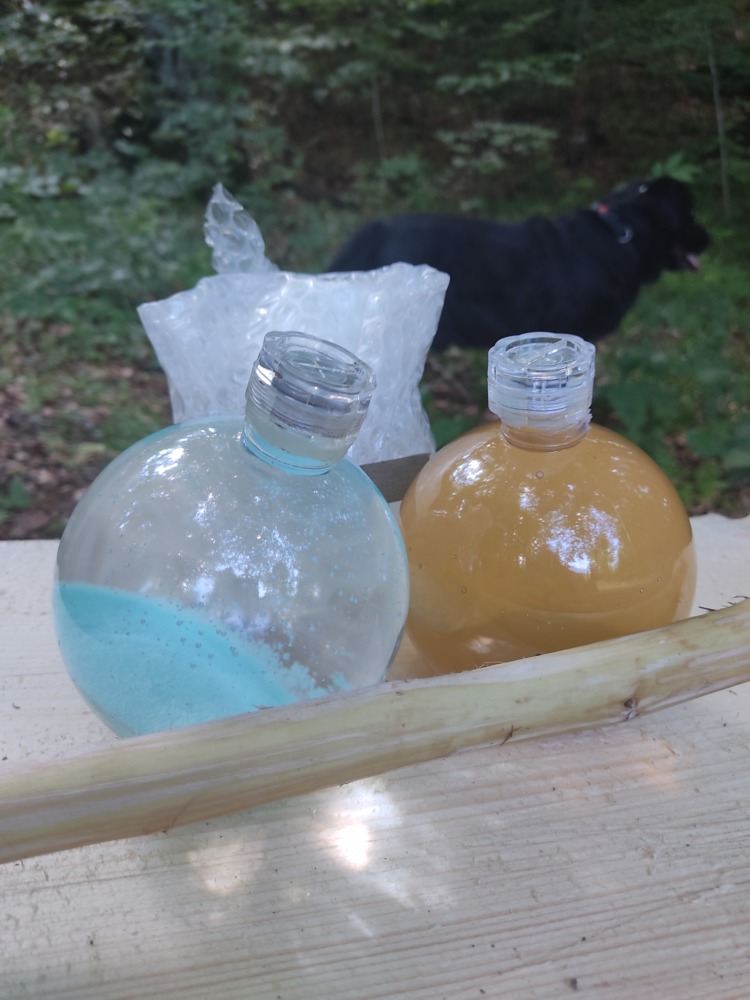Column
ColumnShaping our beautiful future by Akiko Sato
A small village Gornji Kuti in a mountainous region of Gorski Kotar has recently been visited by few artists creating new works of art dedicated to this region. One of them was Akiko Sato born in Mie Japan and currently living in Zagreb, Croatia. She studied Living space design in Kuwasawa Design School, Tokyo, Japan, and holds BFA in, Fine Arts from Cornish Collage of the Arts, via New York. Her experience includes numerous interdisciplinary, multicultural collaborations, set and costume designs, with acclaimed award-winning multimedia dance companies and performers such as Gabri Christa and Danzaiza, Troika Ranch, and Tracie Morris, among the others. Akiko currently works on visual installations, audio-visual works and are sight specific art works often in collaboration with local communities.
 ©RIJEKA 2020 llc
©RIJEKA 2020 llc
The art project and art installations “Buna Bunar” was developed gradually during the last two years. Although the first idea was to create a site-specific sound installation, the original idea was modified over the course of time. Working closely with the local community she gained a deeper understanding of the local life, the importance of beautiful beech wood and nearby water well. Contemplating how to capture both Croatian and Japanese culture, Akiko found that the richness of beech tree wood in Gornji Kuti was this magical link. Following her artistic impulse, she went on the research trip to Japan’s UNESCO World Heritage Site Shirakami-Sanchi, a mountainous area in northern Honshū to visit the last virgin forest of Siebold’s beech. Akiko’s artistic insights are best presented in her own words:
“Buna in Japanese means beech tree, it derives its name from the sound “bun” when the wind passes the Beech forest. Bunar is well in Croatian. Wordplay of two words from two cultures – this project is a journey of attempting to find new ways of communication with nature, and to create a platform in the village of Gornji Kuti as a sight specific art form. This site-specific location is surrounded by the Beech family trees looking down on the well built in 1887 since when is providing water to homes in Gornji Kuti.
Communicating with nature eventually becomes universal in a vast sense. There is some kind of a network that connects each evidence to the other when you consciously experience them. They seem to be dropping vague clues and by carefully putting those puzzles together to make some sense, it starts to compose a story. This is a conversation. If the privilege of an artist is to explore new thesis and possibilities for the future, beech forest was a crowning collaborator for me. I learned that the rich forest has an extremely precise detailed mechanism for providing us with a wealth of life, and the joy of getting to know more about it was beyond comprehension. I started to see them as a respective entity since they seemed to be understanding the language of the true intention of this universe. I believe this to be the future of our interaction, not just among humans but with all other beings co-existing in our planet.
 ©RIJEKA 2020 llc
©RIJEKA 2020 llc
Shirakami Sanchi is located in the Northern part of Tohoku area, last part of Honshu before the Hokkaido. In this area lies the world`s largest untouched virgin beech forest and protected as a heritage of UNESCO. There I learned that the rich forest has a meticulous system for providing us with the water, which our source. The trunk of beech are so flexible, they can hold the weight of heavy snow during the long winter, and as the snow melts, the forests provide clean water with healthy minerals that streams to 5 big main rivers in this region, and the beech forest plays a very important role for its filtration process that clears acidity and even the radioactive contamination. The beech leaves are designed as a perfect receiver for rain droplets, that shaped like a folded origami, with 11 lines on both sides which connects to the dark line on the trunk where the water streams straight down to the bottom of the roots. Leaves of beech trees are very strong, it takes 5, 6 years to become complete compost, and creates an incredibly rich soft and warm ground for the organism to breed and animals to survive the winter. There I was able to visit the mother tree of the Shirakami Sanchi a 400-year-old tree, while the normal life span of these beech trees is 200 to 300 years. I was impressed by the fact that beech roots are all entangled together as if they are holding hands and when one falls surrounding trees fall together like dominos. This scene made me think about the circle of life, what we all are destined to, the grace of death.”
Upon return from Japan, Akiko created her final art installations “Buna Bunar”:
“I made a series of sketches with the Mother tree in Gornji Kuti. Through simple sketching, our bodies became conduits of information. The whole process turned into an introspection of my own emotions, as if by the mere act of sketching the elements were emotionally and physically interacting on a different level of magnetic gravitational frequencies in the holographical nature of the Universe.
 ©RIJEKA 2020 llc
©RIJEKA 2020 llc
I am humbly adding an intention to the site of the village of Gornji Kuti on this occasion, that represents a sensory story curved into the re-newed wooden door of the water tank. I will also be sinking 3 glass containers of solutions energized by the chemical process known as GANS (gas in atomic nano solid-state). GANS interacts with the magnetic gravitational field of elements. When we put these glass containers with the energized solution into the well, elements of water will copy their energetic field and create Plazma water. At the opening, I would invite the audience to add their prayers and visions for a beautiful future. This will be the presentation of what has evolved in the process, in resonance with the magnificent organism of the Beech forest, water as a shape shifting story teller, rocks, animals and insects, and many people who provided me with a wealth of information and supported in their profession. This is marking the beginning of my new adventure, I hope you will enjoy visiting the site of Buna Bunar, and to add some of your intention to shaping our future.”




 ©RIJEKA 2020 llc
©RIJEKA 2020 llc



